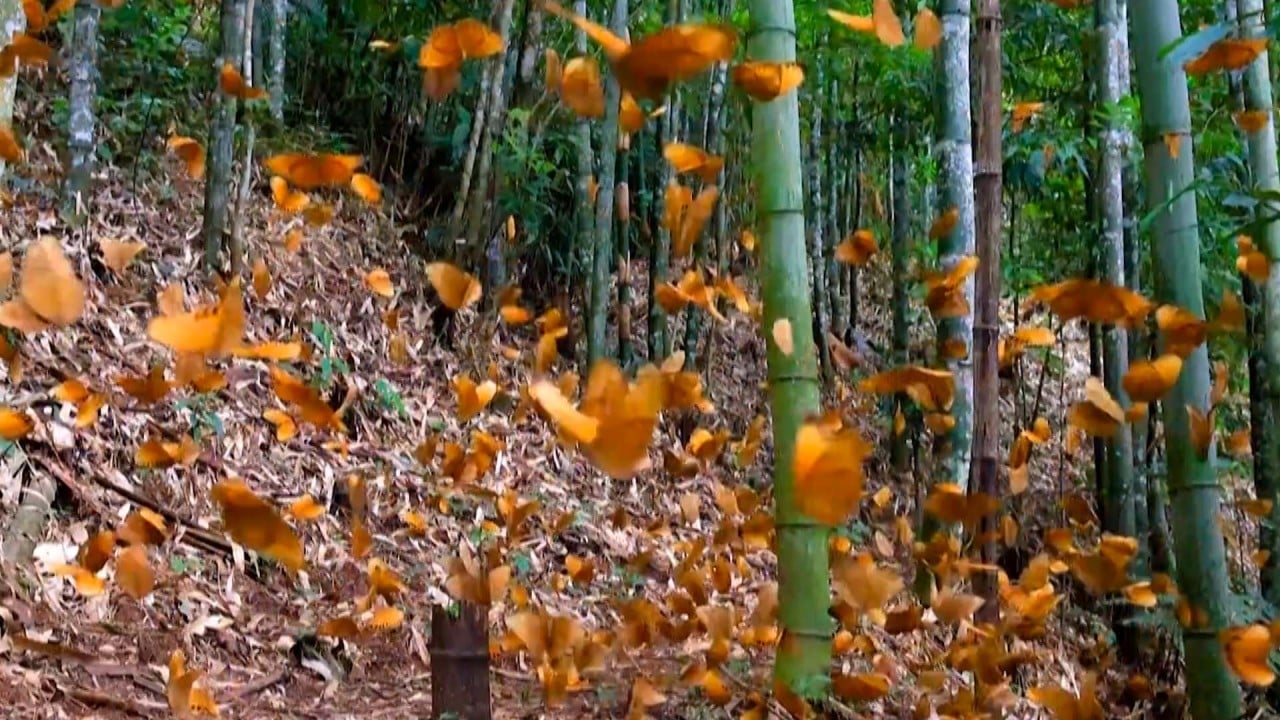
The team has been tagging butterflies using small stickers with an individualised code and a link to the reporting website since December 2021. Between October and December last year, the researchers marked nearly 2,200 butterflies.
The scientists say the small stickers do not impede the insects’ ability to fly because they are not as fragile as they appear, but they said members of the public should not try to catch butterflies themselves.
Instead they want people to visit the website to report when and where a butterfly was spotted – dead or alive – so that they can determine the direction, distance and speed of their seasonal movements.
One such butterfly, a chestnut tiger, was found to have flown around 2,400km (1,490 miles) from Japan to Hong Kong.
Timothy Bonebrake, a professor at the HKU school of biological sciences, said butterfly migration is an indicator of climate change.
“Butterflies were some of the first species for which we saw the ‘fingerprints’ of climate change,” he said.
“We were seeing this – mostly in Europe – butterflies shifted their distributions towards the poles. Biologists recognise that as what we would expect with climate change because as it gets warmer, they can inhabit more northerly latitudes.”
“We don’t really know in Asia how climate change is going to be impacting species and diversity. We expect that climate change will [affect] their strategies for overwintering but what we don’t know is how.”
Bonebrake said the key to conserving the insects is to ensure that the habitats along their migratory routes remain able to sustain them.
“But we don’t even know where those locations are. It makes it very difficult to manage,” he said.
The project has so far mainly received sightings from within Hong Kong, but Bonebrake said: “We’re still hoping to get overseas reports or reports from mainland China.”
Researchers want to discover more about butterfly migration patterns. Photo: Handout
Another team member, Ling Yuet-fung, a PhD candidate at HKU, said the city’s butterflies possibly originate from the southern parts of the mainland, Taiwan or Japan’s southern islands.
“For most butterflies in the cluster, they don’t extend a lot further north in terms of latitude in the summer breeding range,” he said.
The researchers found that some clusters in Hong Kong have populations of thousands of butterflies, including one on Lantau Island with more than 10,000 and another one on Lamma Island with around 5,000.
They had also re-encountered a few butterflies three to four months after they were tagged, which came as a surprise to the researchers because most adults only live for two to three weeks.
One example he gave was a cluster on Lantau that appeared to have slightly shifted location because of tree felling for a nearby housing project.
Bonebrake said butterflies are very sensitive to changes in the environment. Noise can disturb them and they become more active in the spring and summer.
The global population of the migratory birds grew from below 1,000 to an all-time high of 6,000 in 20 years. It is listed as a protected species in many places, including in mainland China, Russia and both Koreas, where it breeds or spends the winter.
“Everyone can ensure that the migratory pathway is conserved. It’s been very effective for black-faced spoonbills. We can use that model potentially for butterflies as well.”
“Butterflies are important for the environment and representative of all the other insects,” he said. “There’s still a long way to go in terms of understanding their ecology and conservation.”



